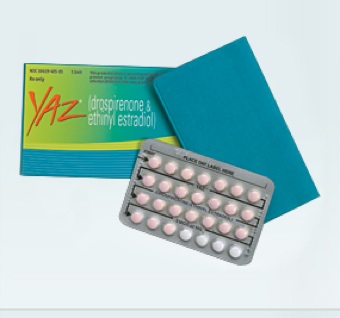 We’ve mentioned Yaz and its sister drug Yasmin before, and our friend Holly Grigg-Spall tracks the progress of complaints against them and other oral contraceptives. Yaz and Yasmin were Bayer’s top-selling drugs in 2008, bringing in about $1.8 billion, a 17 percent increase from 2007. The key element that makes them different from other OCs is drospirenone, a new form of synthetic progestin which has a pharmacological profile that is reported to be closer to the human body’s own progesterone but a safety profile that has come under scrutiny since the FDA approval of Yaz/Yasmin. Last fall, Bayer revealed that they were fighting 129 lawsuits over side effects and marketing of Yaz and Yasmin. More suits have since been filed.
We’ve mentioned Yaz and its sister drug Yasmin before, and our friend Holly Grigg-Spall tracks the progress of complaints against them and other oral contraceptives. Yaz and Yasmin were Bayer’s top-selling drugs in 2008, bringing in about $1.8 billion, a 17 percent increase from 2007. The key element that makes them different from other OCs is drospirenone, a new form of synthetic progestin which has a pharmacological profile that is reported to be closer to the human body’s own progesterone but a safety profile that has come under scrutiny since the FDA approval of Yaz/Yasmin. Last fall, Bayer revealed that they were fighting 129 lawsuits over side effects and marketing of Yaz and Yasmin. More suits have since been filed.
So with this context in mind, it was with great interest that I noticed this study in my periodic searching of menstruation research literature: Bleeding patterns and menstrual-related symptoms with the continuous use of a contraceptive combination of ethinylestradiol and drospirenone: a randomized study, published in last month in Contraception. It’s a small study, only 78 women over six months time, but the researchers conclude: “Continuous use was associated with amenorrhea and fewer menstrual-related symptoms compared to cyclic use.”
It looks like Yaz and/or its analogues are being tested for marketing as menstrual suppression drugs. Time to put in an interlibrary loan request to get my hands on the full study. Anyone want to place bets on how the study was funded?

